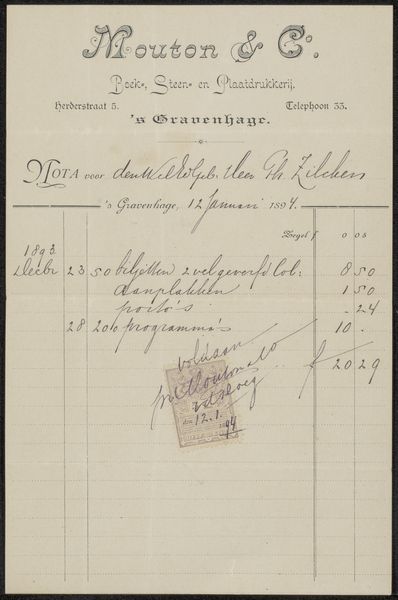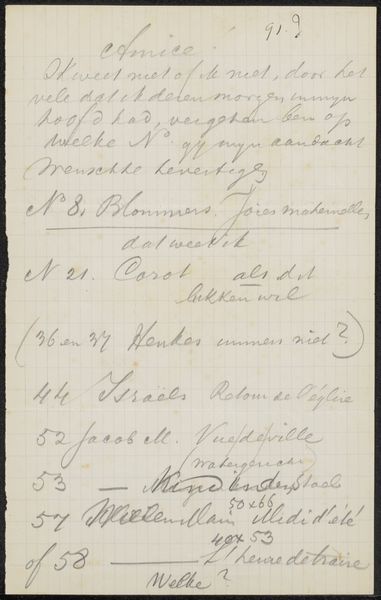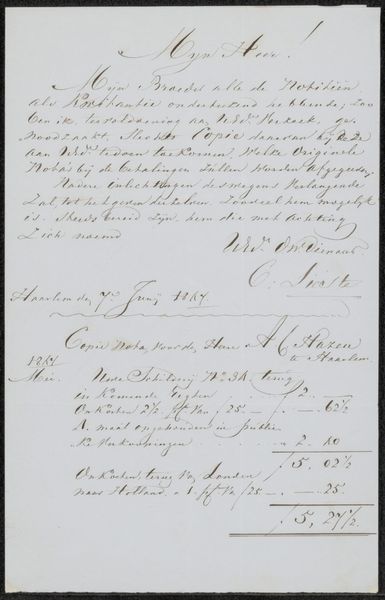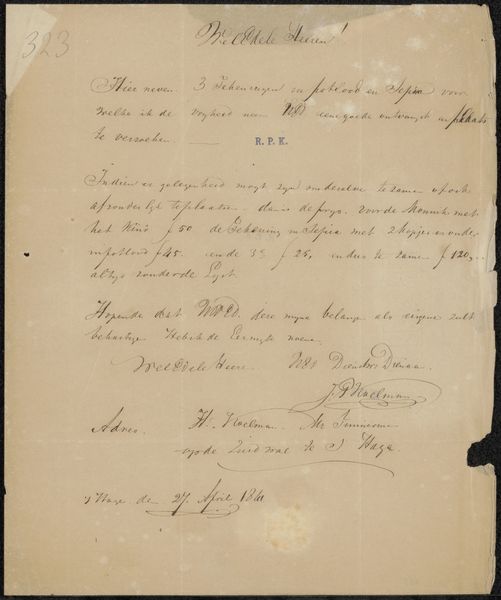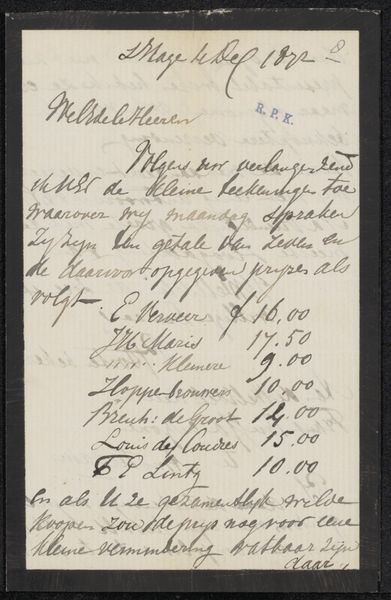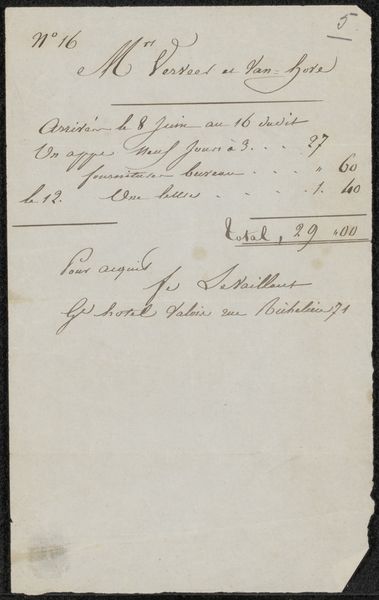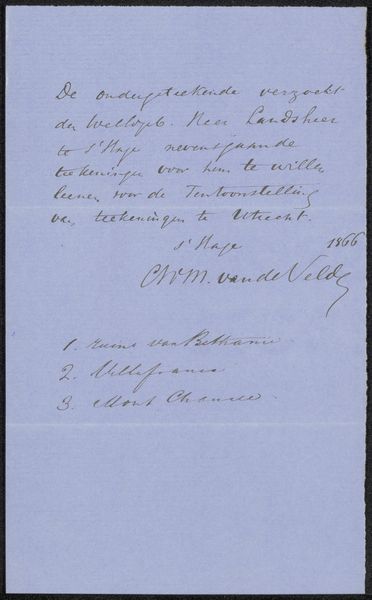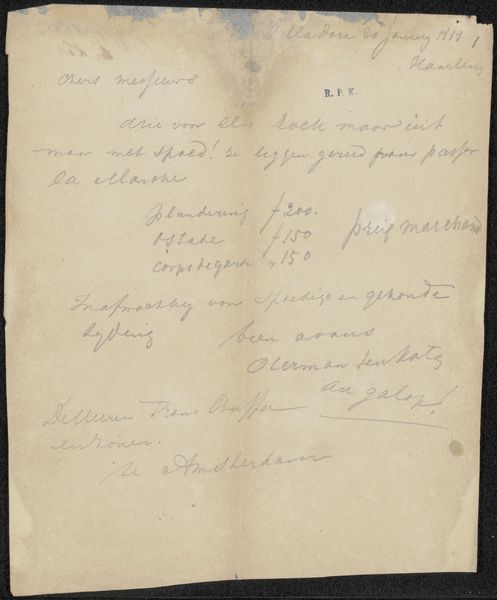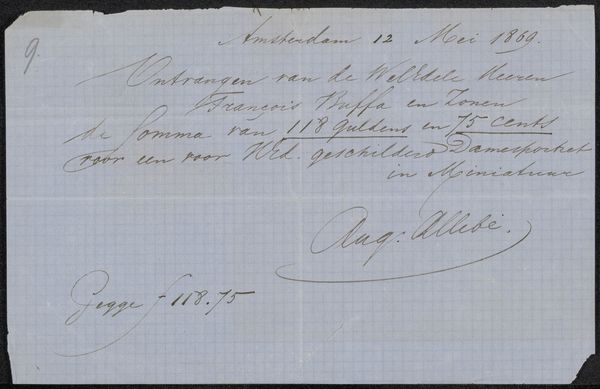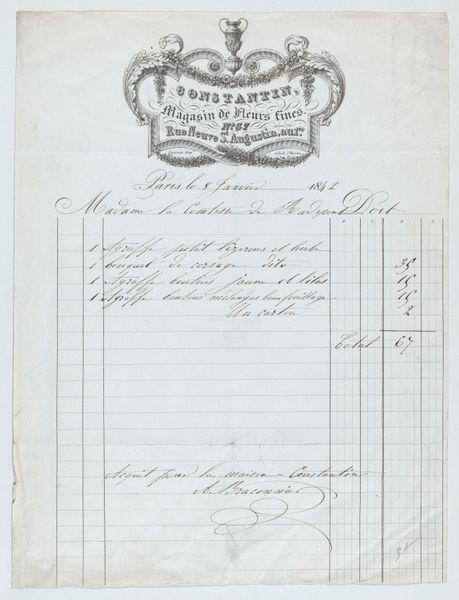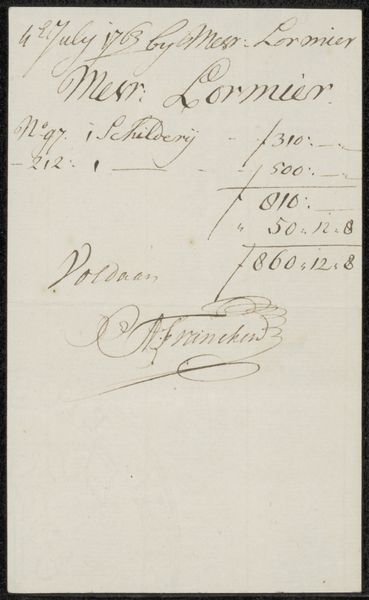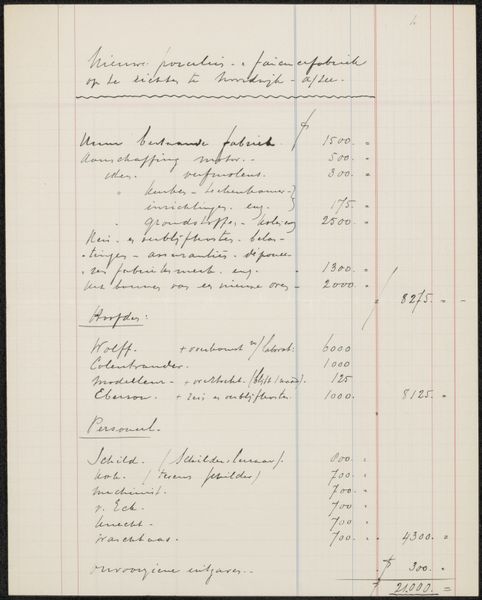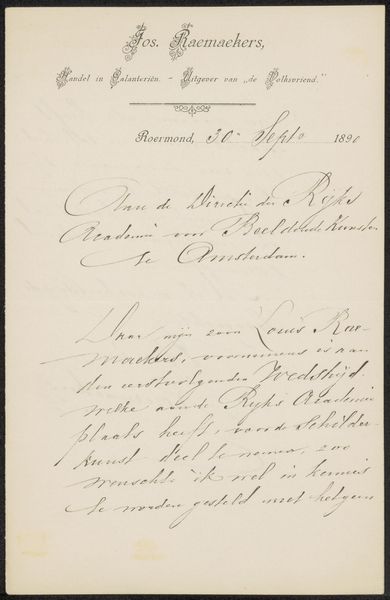
drawing, print, paper, typography, ink
#
drawing
#
aged paper
#
hand written
#
hand-lettering
#
dutch-golden-age
# print
#
hand drawn type
#
hand lettering
#
paper
#
personal sketchbook
#
typography
#
ink
#
hand-written
#
hand-drawn typeface
#
fading type
#
handwritten font
#
calligraphy
Copyright: Rijks Museum: Open Domain
This bill, created in 1892 by Mouton & Co. in The Hague, is more than just an invoice; it's a cultural artifact brimming with symbolic potential. Consider the company's name, emblazoned at the top. "Mouton" evokes the image of a sheep, a creature laden with meaning across cultures. In Christian iconography, the lamb symbolizes innocence and sacrifice, while in secular contexts, it represents docility and conformity. What does it mean that a printing company adopts this symbol? The act of writing itself is potent. Handwriting, with its unique flourishes, connects us to the individual behind the words. This bill, with its careful script, speaks to a bygone era, a time when commerce was conducted with a personal touch. The stamp, a visual validation, echoes the authority once vested in seals and symbols. The arrangement of the invoice, neat columns conveying the exchange of commerce, harks back to early forms of record-keeping. This impulse to quantify and organize, echoing across time. This image, a mundane record of commerce, encapsulates the enduring human quest to order and understand our world.
Comments
No comments
Be the first to comment and join the conversation on the ultimate creative platform.
